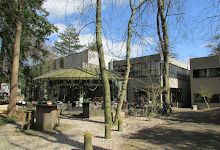Archive number: 81
Title: Indian Summer
Main Album: Focus (1985)
Track number: 4
Genre: Progressive Rock Instrumental
Studio: Studio Spitsbergen, Zuidbroek, Groningen, The Netherlands (mixed at Dureco Studios, Weesp, The Netherlands)
Length: 05' 49”
Composer: Jan Akkerman
Musicians: Jan Akkerman - Synthesiser Guitar, drum machine, Acoustic guitar; Thijs van Leer – Keyboards inc synthesisers, Flute; Tato Gomez – Bass; Ustad Zamir Ahmad Khan - Tabla; Fairlight programmed by Ed Staring.
Producer: Ruud Jacobs with Jan Akkerman, Thijs van Leer and Theo Balijon
Engineer: Emile Elsen, Jan Akkerman and Theo Balijon
Label: Mercury (Phonogram)/Vertigo
Date of recording/release: Recorded 1985 Released LP/CD -1985 CD – 1989
Alternative version: None
Notes: Van Leer took us to Russia and Argentina and here Akkerman turns to India for inspiration. First, we hear a sitar-like lead guitar backed by synthesised drums and electric bass (00:00-00:51). From 00:51 van Leer's keyboards join in with brass and flute sounds of a grand, more western sort. From 01:29 things get very eastern with an energetic flute-led, tabla-backed sound. An Indian-sounding guitar or keyboard also features. From 02:00 a Spanish guitar can also be heard as can other more conventional guitar sounds as the piece moves on. At 02:53 the tablas become more prominent again as the previous themes continue. There is a distinct slowing down from 03:34 in keeping with the flute style. However, just when the music is about to die things revive again with brassy keyboards and later guitar (eg at 05:06). Eventually, we come to the final melt down, the end of which is punctuated by a final strong synthesised drumbeat (05:47-05:49).
Note on tabla (from Wikipedia)
The tabla is a popular Indian percussion instrument used in classical, popular and religious music of the Indian subcontinent and in Hindustani classical music. The instrument consists of a pair of hand drums of contrasting sizes and timbres. The term tabla is derived from an Arabic word, tabl, which simply means "drum".
The instrument's history is uncertain and has been the subject of sometimes heated debate. The most common historical account credits the 13th century Indian poet Amir Khusrau with its invention when he split a single Pakhawaj drum into two parts. However, none of his writings on music mention the drum. Another common history suggests that the tabla is thousands of years old, yet critics assert this is mere conjecture, based on slipshod interpretations of iconography. The most reliable historical evidence places its invention in the 18th century. The first verifiable player of tabla was Ustad Sudhar Khan of Delhi.
The smaller drum, played with the dominant hand, sometimes called dayan ("right") but correctly the "tabla" is made from a conical piece of mostly shesham or teak and rose wood hollowed out to approximately half its total depth. One of the primary tones on the drum is tuned to a specific note, thus contributing to and complementing the melody. The tuning range is limited though different dāyāñs are produced in different sizes, each with a different range. For a given dāyāñ, to achieve harmony with the soloist, it will usually be necessary to tune to either the tonic, dominant or subdominant of the soloist's key.
The larger drum, played with the other hand, is called bāyāñ ("left"). The bāyāñ has a much deeper bass tone. It may be made of brass (most common) or copper (more expensive but generally held to be best) while aluminium and steel are often found in inexpensive models. One sometimes finds wood used (especially old bāyāñs from the Punjab). Clay is also used, although not favoured for durability (generally found in the North-East region of Bengal).
The playing technique for both drums involves extensive use of fingers and palms in various configurations to create a wide variety of sounds. On the bāyāñ the heel of the hand is also used to apply pressure, or in a sliding motion, so that the pitch is changed during the sound's decay. This "modulating" effect on the bass drum and the wide range of sounds possible on the instrument as a whole are the main characteristics that make tabla unique among percussion instruments.
Both drum shells are covered with a head (puri) constructed from goat or cow skin. An outer ring of skin (keenar) overlays the main skin and serves to suppress some of the natural overtones. The two skins are bound together with a complex woven braid that also gives the entire assembly enough strength to be tensioned onto the shell. The completed head construction is affixed to the drum shell with a single continuous piece of cow or camel hide strap laced between the braid of the head assembly and another ring (made from the same strap material) placed on the drum's bottom. The strap is tensioned to achieve the desired pitch of the drum. Additionally, cylindrical wood blocks (ghatta) are inserted between the strap and the shell allowing the tension to be adjusted by their vertical positioning. Fine tuning is achieved by striking vertically on the braided portion of the head with a small hammer.
The skins of both drums also have an inner circle on the head, the syahi ("ink"). This is constructed using multiple layers of a paste made from starch (rice or wheat) mixed with a black powder. The precise construction and shaping of this area allows modification of the drum's natural overtones, resulting in a clarity of pitch and a variety of tonal possibilities unique to this instrument. The skill required for the proper construction of this area is great and is where the quality of a particular instrument is most likely to differ.
For stability, each drum is positioned on a toroidal bundle called chutta or guddi, consisting of plant fibre or other malleable material wrapped in cloth.





















No comments:
Post a Comment